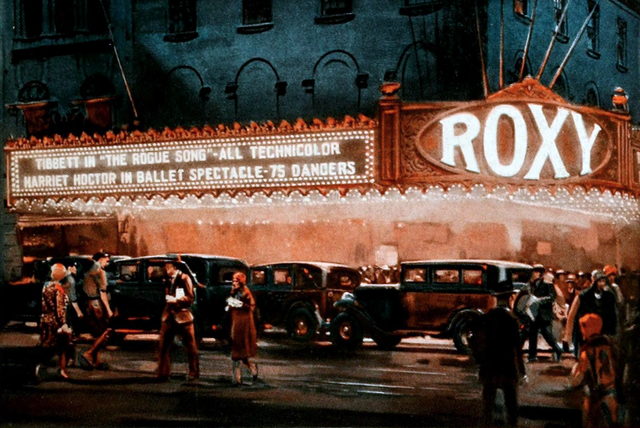Note to those who receive
new posts via e-mail: You must click on the title of the new post, highlighted
above in blue, in order to access moving images and sound.
Every
Sunday (1936), an MGM musical short, is a precious document that introduces
two adolescent girls--two remarkable talents--Judy Garland and Deanna Durbin. Head
of studio Louis B. Mayer was apparently furious when, after putting Garland
under contract, Durbin became such a huge success so quickly, for a rival
studio, Universal. Garland, of course, went on to become a screen legend, her
films frequently revived. Durbin, fed up with the generally mediocre material
in which she was cast, abandoned Hollywood and the movie business, show
business in fact, in 1948 when she was only twenty-seven years old. Both of them have cult followings but Durbin
is far less well known today. Contemporary viewers are often puzzled to learn
that Deanna Durbin is credited with having saved Universal from bankruptcy with
her feisty adolescent nature and her precocious voice. In a series of films
directed by Henry Koster, she was, for ten years, sensationally popular in the
United States and England.
Co-starring in Durbin’s second feature, One Hundred Men and a Girl (1937), was Leopold Stokowski. The
renowned conductor’s reaction to her rendition of Mozart’s “Allelulia” (from Exsultate, jubilate) mirrored that of
amazed moviegoers, particularly those familiar with Mozart and the
classically-trained voice. However much expert coaching went into Durbin’s
impeccable delivery of the piece, the fifteen-year-old seems to be to the
manner born. Of course, what makes her a movie star is the ability to project
so palpably her personality, her feelings, her joy in music and in singing. Her
pluckiness remains a significant image of America in the late '30's.
Durbin's voice, healthily equalized throughout her range, and her
refined musicality take on particular value when she is compared to the
"legit" sopranos who attained stardom in the 1940s, Jane Powell and
Kathryn Grayson. Although Powell and Grayson are technically proficient,
capable of the coloratura flexibility that audiences loved, they lack Durbin’s
immediately recognizable sweetness. Like Garland, Durbin was a talented actress
with an individual, recognizable style. That style, consonant with her musical
discipline, is perceived in the fluent, rapid-fire, but utterly clear delivery
of dialogue with irresistible impetus and energy, often with a dash of irony
that never smacks of bratishness but rather, of real intelligence, and with a
warm personality that echoes her singing/speaking voice. This served her
ongoing popularity in "grown-up" roles of the 1940s. It Started with Eve (1941) pits her verbal
virtuosity against the formidable Charles Laughton—the outcome is a draw.
(Alas, I have found no extended excerpt from their scenes together to include
in this post).
In this short scene from Spring
Parade (1940), Durbin exhibits
the charm, the verve, and the spirit that captivated movie audiences. Here, in
a variation of the “Little Miss Fix-it” she played through her ‘teens, she
promotes the musical career of a young composer. It is with enormous relief
that the song, first bellowed by the relentlessly grinning Robert Cummings, finally
takes wing when she chimes in.
In Christmas Holiday (1944),
directed by a master of film noir, Robert Siodmak, and written by Herman J.
Mankiewicz (responsible for the script of Citizen
Kane), her dramatic role suggests that at a different studio, with perhaps
a higher degree of ambition, she would not have truncated her career so abruptly.
The visual context of noir melodrama enhances the final confrontation between
the guilt-ridden, distraught Abigail (Durbin) and Robert, her deranged husband
(Gene Kelly).
Christmas
Holiday is the sole melodrama in Durbin’s filmography. The “Western”
musical Can’t Help Singing (1944), another rare effort to vary the formula,
is her only feature shot in Technicolor. The film features musical numbers (Jerome
Kern’s last score) staged on location. I end this post with Durbin singing “Any Moment Now” in
scenery that matches the “wonderland” of E. Y. Harburg’s lyrics.
